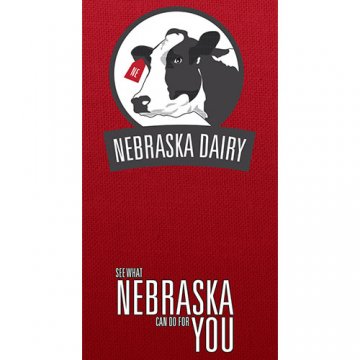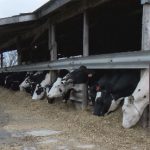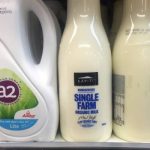
State agencies are also visible, touting their particular state as a place where you should establish, or move, your dairy business. It’s also a time in which these agencies are reinforcing their state’s message that producers are a valuable part of the fabric of the state.
When one thinks of recruitment, most images are of talented athletes being wooed by various colleges to ply their trade to a particular university. While dairy producers might not have a jump shot, they do have a valuable commodity in their dairy business that is a tremendous economic engine for rural economies. States know this, and that’s why there’s a full press to gain new business while providing producers in the state services that help them succeed.
“Our goal is to show producers that Nebraska provides ample opportunities for dairy growth,” says Will Keech, director of livestock development for the Grow Nebraska Dairy Team. “We are known as a livestock-friendly state, and we have regulations in place that encourage agricultural growth statewide.”
The outreach to producers is to show that the infrastructure is in place, and there are facilities that have already been through the citing process. “Our drier, more temperate climate has attracted several dairy heifer development operations,” Keech says. “And talking directly to producers is one of our more effective outreach efforts.”
Pennsylvania was making its first official presence at World Dairy Expo. “We attended World Dairy Expo in 2018 and realized this was a prime opportunity to support the Pennsylvania dairy industry,” says Laura England, bureau director for the Pennsylvania Department of Agriculture. “We are showing that Pennsylvania is a good place for not only dairy producers but also dairy processors as well.”
England was also promoting the state’s Dairy Investment Program, which provides $5 million in grants to the dairy industry to support research, products, and practices; market promotion; transition to organic production; and incorporating or expanding value-added dairy production. “This program shows that Pennsylvania is investing in the dairy industry,” England says.
Dairy is a $14.7 billion industry in the state.
“We are working to build recognition for our industry in the state,” she says. “We want to be here to support our existing producers and processors, and let others know that we want your business.”
With 160,000 head of dairy cattle and 260 dairies, Kansas has been a regular at World Dairy Expo for several years. “We are an ag-friendly state, and we want to promote that Kansas is a place to establish a dairy business,” says Shirley Acedo, agribusiness coordinator for the Kansas Department of Agriculture. “We field questions regarding feed availability, water, land prices, and regulations.”
BUILDING THE INFRASTRUCTURE
Attracting dairy producers to a state or region is only part of the recruitment efforts. They also include work with processors to locate in the state or expand existing facilities. In South Dakota, the recent expansion of a cheese processor in Lake Norden has significantly increased the demand for milk in the region, says Dave Skaggs, business development representative for the governor’s office of economic development.
“Simply adding more dairies is not enough, we need to develop demand from local processors. In South Dakota, we will need 60,000 more cows to fulfill demand created by processors who have established new facilities or expanded existing plants,” he says.
And it’s not only the processing of end products. Dairies need consistent feed sources, as well as a land base for nutrient management. “One of the questions we hear a lot is about the availability of feed,” Skaggs says. “We have the land base and climate that can grow feed. It is an important aspect of our state that makes it attractive to dairy producers.”
States that have a history of livestock production also have a track record of how they deal with livestock regulations and citing requirements. “Dairy producers not only look at the physical surroundings but also the regulatory atmosphere in the state,” Skaggs says. “When making an investment they want to ensure the regulatory process is fair, stable, and reasonable.”
RETENTION AND SUPPORT FOR THE FUTURE
While states may be touting that they are establishing new facilities, they also work hard to ensure that current dairy farms are supported through a variety of initiatives. Wisconsin, a state steeped with dairy history, uses its presence to tout the industry’s $100 billion impact on Wisconsin’s economy.
“Dairy is a strong economic engine for the state,” says Norm Monsen, diary development consultant for the Wisconsin Department of Agriculture, Trade and Consumer Protection. “We have a strong processing capacity, so it is important that we provide resources for producers in order to keep them healthy and viable.”
Lately, Wisconsin has been focusing on programs that assist producers in farm transition and succession planning. “We want to ensure that we have strong dairy production to supply the many processors in the state. That means we must do what we can to help our producers plan for the next generation,” he says. “These programs have been in very high demand.”
The state’s Center for Dairy Research is also a key tool for producers. “We are helping producers think outside the box, supplying them with information on innovations that can benefit their operation now and into the future,” Monsen says.

























